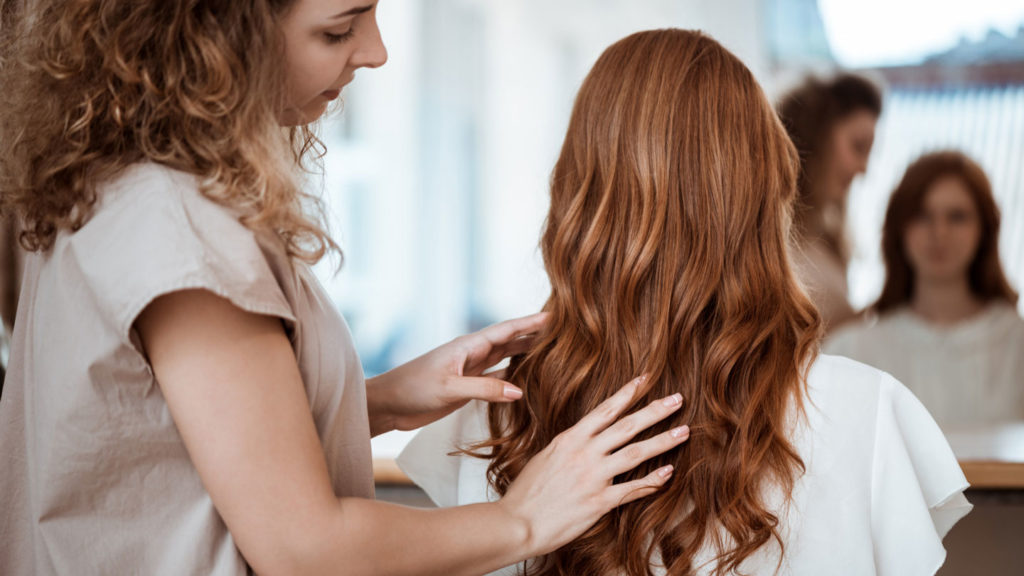If you want your hair to seem healthy and attractive, you need to give it the attention it deserves. Maintaining a regular hair care regimen is important whether your hair is long, short, curly, or straight.
If you know your hair type, you may take steps to improve its health and enhance its natural attractiveness. In this article, we’ll review some basic rules and principles for maintaining a full head of hair. Therefore, continue reading before you look for master barber shave.
Understanding Your Hair Type
Knowing your hair type is the first step in developing a healthy hair care program. Different hair types have different needs for maintaining health and beauty. Straight hair is the most common, followed by wavy hair, curly hair, and kinky hair.
Although straight hair has a natural sleekness and shine, it may quickly get oily and flatten out if not cared for properly. Keep the natural shine and avoid oil accumulation on straight hair to keep it healthy. The loose curls characteristic of wavy hair may be improved with water and styling solutions designed for curly hair.
Because of its texture, curly hair needs special attention to prevent dryness and tame frizz. To avoid breakage, kinky hair has to be kept wet and detangled with care because of its tight coils.
Regular Cleansing and Conditioning
To keep hair healthy, washing and conditioning it often is essential. Selecting a mild shampoo and conditioner formulated for your specific hair type is crucial. Some shampoos are too harsh and will dry out your hair, while others are too thick and can weigh it down.
Be careful to gently massage your scalp when washing your hair to increase blood flow and foster an optimal setting for hair development. Make sure to give your hair a good rinse to eliminate any leftover product and any residue.
Nourishing Your Hair from Within
A healthy diet is essential to keeping healthy hair from the inside out. The foundation for healthy hair and a radiant scalp may be found in the essential nutrients. Some dietary additions help avoid deficits that cause hair to thin or fall out, while others can stimulate growth.
Sebum, your scalp’s natural oil, is partly kept moist by vitamin A, which aids in its production. Eat more sweet potatoes, carrots, and spinach to get the necessary vitamin A. Vitamin C helps the body make collagen, which fortifies the hair shaft.
Vitamin C is abundant in foods like citrus fruits, berries, and green leafy vegetables. Vitamin B7 (biotin) is required for normal hair development. Eat more eggs, almonds, and avocados to increase your biotin intake.
Proper Styling Techniques
Maintaining healthy hair while expressing individuality via your hairstyle is a delicate balance. Dryness, breakage, and general damage may result from excessive heat styling and harsh-style chemicals. The following are some suggestions for taking care of your hair and preventing damage:
Use Heat Protectant
A heat protectant spray or serum is recommended before utilizing heat-styling appliances such as straighteners or curling irons. This reduces the potential for harm from extreme heat.
Limit Heat Usage
Try to go longer between heat treatments, and if feasible, go heat-free altogether. To protect your hair from heat, embrace your natural texture or use heatless methods like braiding or air-drying.
Avoid Tight Hairstyles
Wearing your hair in a tight ponytail, bun, or braid may cause damage and eventual hair loss. Choose less constricting hairstyles to ease the strain on your strands.
Choose Hair-Friendly Accessories
Choose elastics and clips that won’t yank or snag your hair when you need to accessorize your do. Please don’t use anything with metal pieces since they might shatter.
You can protect your hair’s health and beauty using safe and effective style methods. Adopt looks that preserve and amplify your hair’s inherent charm.
Conclusion
To keep your hair looking and feeling healthy, you need to commit to a routine and practice excellent hygiene that may need expert like master barber shave suggestions.
You can have healthy, beautiful hair by learning your hair type, routinely washing, and conditioning it, feeding it the right foods, learning the right style methods, taking care of your scalp, and keeping it out of the elements.


